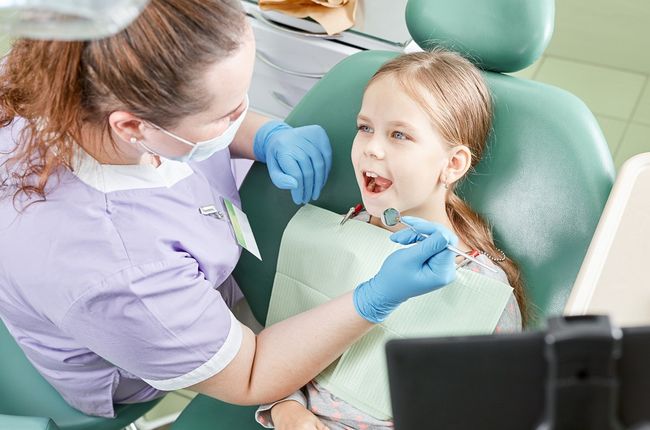Dental implants have revolutionized the field of restorative dentistry, offering a durable and aesthetically pleasing solution for missing teeth. However, achieving a successful dental implant can sometimes involve more than just placing the implant itself. One critical aspect that often comes into play is bone grafting in Kenmore WA. Understanding how this procedure enhances the stability of dental implants is essential to making informed choices about oral health.
Imagine your jawbone as a sturdy foundation for your new smile—if that foundation lacks strength or density, it may not support an implant effectively. This is where bone grafting steps in to create a solid base for both functionality and aesthetics. With so many individuals seeking dental implants in Kenmore, WA, it's crucial to explore how bone grafting plays a vital role in ensuring long-term success and stability of these life-changing restorations. Let’s dive deeper into what you need to know about this integral process!
Understanding Dental Implants
Dental implants are artificial tooth roots designed to provide a strong foundation for fixed or removable replacement teeth. They mimic the function of natural tooth roots, making them a popular choice for restoring smiles.
Typically made from titanium, dental implants fuse with the jawbone through a process called osseointegration. This creates stability and durability that can last many years, offering patients an effective solution to missing teeth.
The implant consists of three main components: the post, abutment, and crown. The post is surgically embedded into the jawbone. Once healed, an abutment connects this post to the visible crown that resembles your natural tooth.
Patients often choose dental implants due to their long-term benefits over traditional dentures or bridges. With proper care and maintenance, they can significantly enhance quality of life by improving chewing function and boosting confidence in one’s smile.
What is Bone Grafting and Why is it Needed for Dental Implants?
Bone grafting is a surgical procedure that helps create a stable foundation for dental implants. When someone loses a tooth, the jawbone may begin to deteriorate over time. This loss of bone density can jeopardize the success of an implant.
The process involves placing bone material in areas where there isn’t enough natural bone to support an implant securely. The graft can come from various sources—either the patient’s own body, another human donor, or synthetic materials.
Why is this important? A solid base ensures that the dental implant integrates effectively with the jawbone. This integration is crucial for long-term stability and functionality. Without adequate bone structure, implants may fail or become loose over time, leading to complications and additional procedures down the line.
The Benefits of Bone Grafting for Dental Implants
Bone grafting plays a crucial role in improving the success rate of dental implants. When there’s insufficient bone density, grafting provides the necessary support for implants to thrive.
- One significant benefit is enhanced stability. A sturdy foundation ensures that dental implants remain securely anchored, reducing the risk of complications down the line.
- Additionally, bone grafting can promote natural healing. The graft material encourages new bone growth, fostering a healthy environment for your implant. This not only helps with immediate stability but also supports long-term oral health.
- Another advantage is improved aesthetics. With adequate bone structure restored through grafting, patients achieve better facial contours and smile symmetry after implantation.
- This procedure often reduces recovery time by minimizing potential issues during and after implant surgery. By addressing foundational challenges early on, patients enjoy smoother experiences overall when pursuing dental implants in Kenmore, WA. Contact us to learn more.
Types of Bone Grafting Procedures
Bone grafting procedures come in several forms, each tailored to meet specific needs.
- Autografts utilize the patient’s own bone, often harvested from areas like the jaw or hip. This method minimizes rejection risks and promotes faster healing.
- Allografts involve donor bone sourced from a tissue bank. While these are safe and effective, patients may have concerns about compatibility and disease transmission.
- Xenografts use bone material from animals, typically bovine sources. These provide structural support while the body gradually replaces them with new human bone.
- There’s also synthetic grafting material available that stimulates natural bone growth. These materials can be particularly useful for those who prefer not to use human or animal-derived substances.
Each type has its advantages depending on individual circumstances and preferences made during consultations with dental professionals. Understanding these options empowers patients in their journey towards successful dental implants in Kenmore, WA.
Recovery Process and Long-term Results of Bone Grafting for Dental Implants
After a bone grafting procedure, the body goes through a healing phase. This process typically lasts several months, as new bone cells integrate with the existing jawbone.
During recovery, patients may experience mild discomfort or swelling. Pain management can usually be handled with over-the-counter medications and prescribed pain relievers.
Regular follow-ups with your dentist are essential. These appointments ensure that everything is healing properly and allow for adjustments if needed.
Long-term results from successful bone grafting contribute significantly to dental implants' stability. A solid foundation means implants can last many years—often decades—with proper care.
Patients often report improved functionality and aesthetics once everything heals completely. The smile becomes not just beautiful but also reliable in everyday tasks like eating and speaking confidently.
Conclusion
Dental implants are a popular solution for tooth replacement, offering both functionality and aesthetics. However, not everyone has sufficient bone density to support these implants. That's where bone grafting comes into play. By enhancing the stability of dental implants, this procedure allows more patients to benefit from this transformative dental technology.
Bone grafting is essential when there isn't enough healthy jawbone to anchor an implant securely. It serves as a foundation that promotes healing and encourages new bone growth in the targeted area. This process significantly increases the chances of long-term success for your dental implants.
The advantages of incorporating bone grafting with your dental implant procedure are plentiful. Not only does it improve stability, but it also reduces the risk of complications down the line while providing better overall outcomes in terms of appearance and function.
Various types of bone grafting procedures can be tailored to meet individual needs—whether it's autografts taken from your own body or allografts sourced from donors. Each method offers unique benefits and can be selected based on specific conditions and preferences.
Recovery after a bone graft may require some patience; however, understanding what to expect can ease anxiety around the process. Most patients find that with proper care, they achieve successful integration over time, leading to enhanced results with their dental implants.
For those considering dental implants in Kenmore, WA, exploring options like bone grafting becomes vital for ensuring optimal outcomes. With advancements in techniques and materials used today, many individuals have discovered renewed confidence thanks to effective treatments combining both disciplines—creating smiles that last a lifetime.
To learn more, visit our office, Amin Tabatabaian DDS PLLC, at 5701 Northeast Bothell Way, Suite 3, Kenmore, WA, 98028. You can also reach Dentist Kenmore WA at (425) 486-9233 and schedule an appointment.














